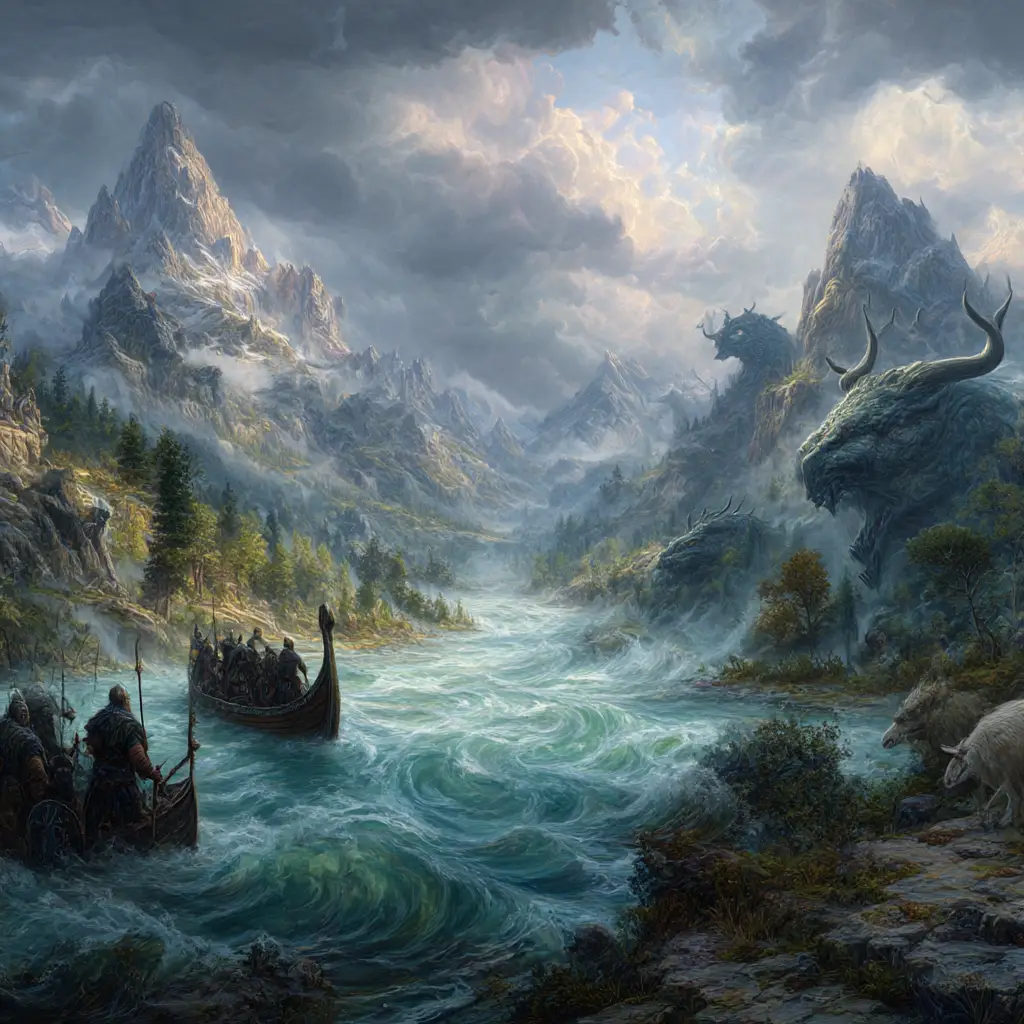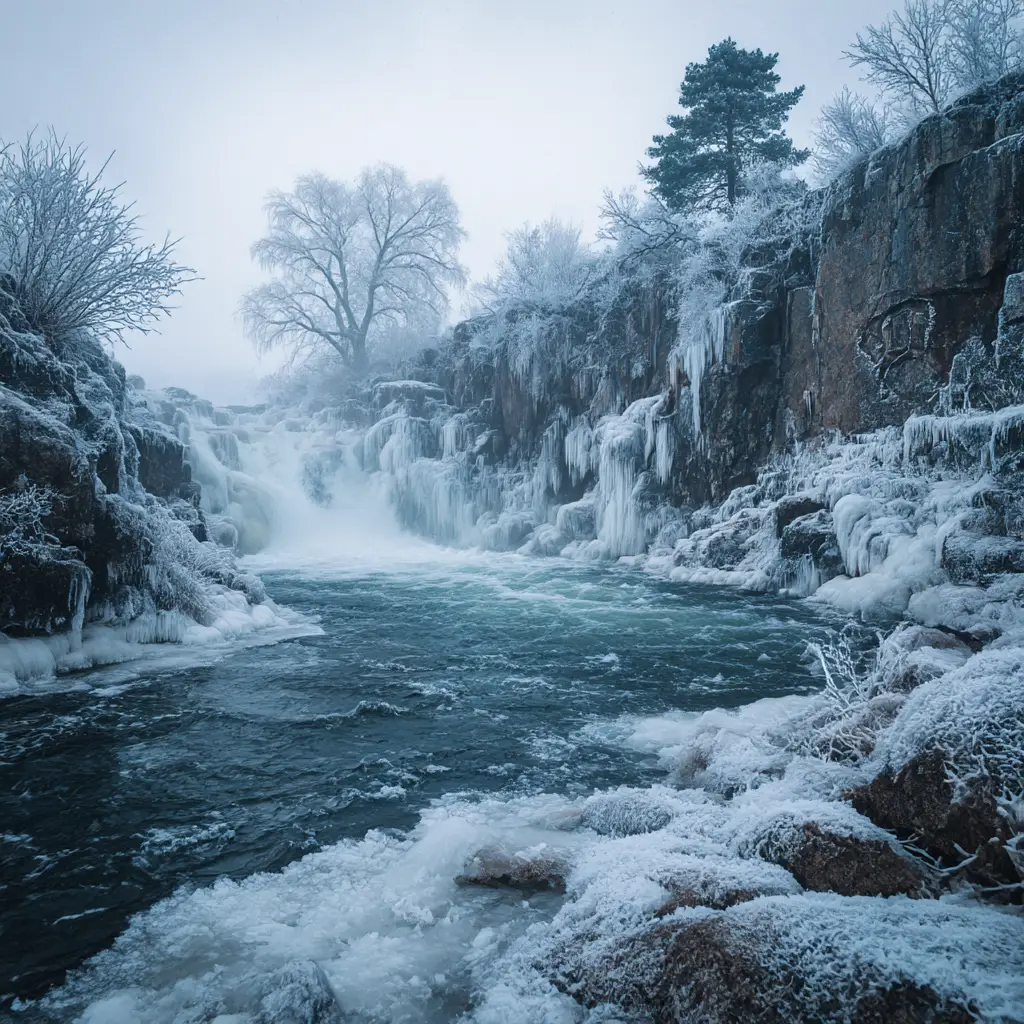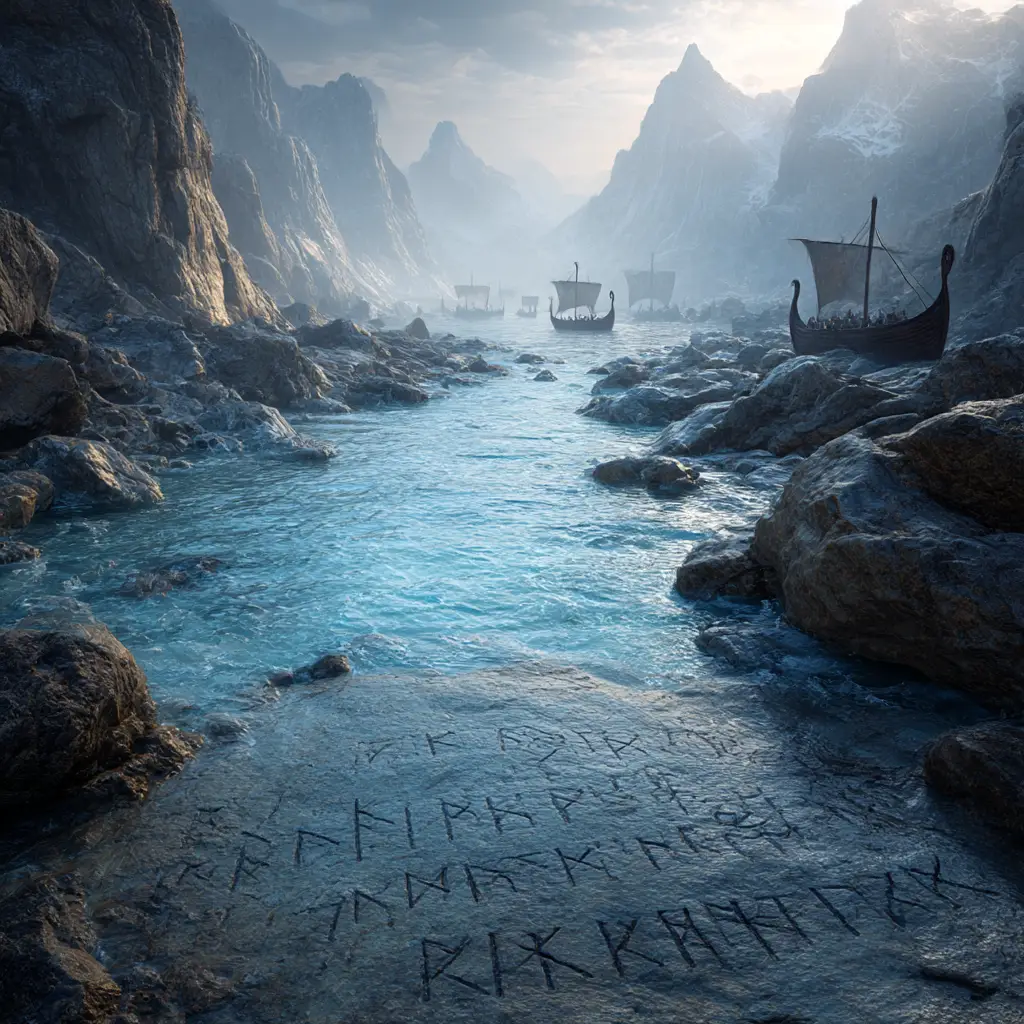In Norse mythology, rivers are far more than bodies of flowing water. They represent boundaries between worlds, channels of creation, and symbols of life, death, and fate. Flowing through the myths of the Eddas and sagas, they connect gods, giants, and mortals in stories that mix physical geography with deep spiritual meaning.
The Primordial Rivers of Creation
According to the Prose Edda, the first rivers were born in the great void known as Ginnungagap, the cosmic emptiness before the worlds existed. From the icy realm of Niflheim flowed the eleven rivers of Élivágar, whose venomous waters froze and hardened into ice. As these icy waves met the warmth from Muspelheim, the fiery realm to the south, the melting frost gave rise to Ymir, the first being and ancestor of the giants.
The rivers of Élivágar are often named individually in old sources, including Svöl, Gunnthrá, Fjörm, Fimbulthul, Slíðr, Hríð, Sylgr, Ylgr, Víð, Leiptr, and Gjöll. Their names describe violent movement, freezing cold, and the deadly flow of nature’s raw power, reflecting the Norse view of rivers as living, dangerous entities that shape the world.
Gjöll – The River of the Dead
Gjöll is one of the most significant rivers in Norse cosmology. Flowing close to the entrance of Hel, the realm of the dead, it is crossed by the Gjallarbrú, a shining, gold-covered bridge guarded by the maiden Móðgudr. When the god Hermóðr journeyed to Hel to plead for Baldr’s return, he crossed this bridge, proving Gjöll’s role as the passage between the world of the living and the dead. The river’s name means “the resounding one”, evoking the echoing sound of water flowing through the underworld.
Slíðr – The River of Swords
The Slíðr river, meaning “the dangerous” or “the fierce”, is said to flow near the entrance to Hel as well. It is filled with sharp swords instead of water, cutting all who attempt to cross. This river represents the pain and suffering of those condemned to the darker parts of the afterlife. Its image of a river of blades reflects a recurring Norse theme – that death and punishment are not just abstract ideas but physical realities that must be endured.
The Rivers of Midgard and the World’s Boundaries
In the Norse cosmological view, Midgard, the world of humans, is encircled by a vast ocean or series of rivers that mark the limits of human existence. Beyond these waters lie the lands of the giants (Jotunheim), chaos, and the unknown. Rivers, therefore, act as protective barriers, keeping order and civilisation safe from the wild forces outside. They also serve as metaphors for fate and the flow of time – unstoppable, unpredictable, and shaped by unseen powers.
Rivers in the Afterlife and Fate
The Norse believed that rivers were woven into the structure of the cosmos and the journey of the soul. Some sources suggest that the Norns, the weavers of fate, draw water from the sacred well Urðarbrunnr, located beneath the world tree Yggdrasil, and pour it over the roots to keep the tree alive. This act links water with destiny and renewal. The rivers flowing from such wells are not merely natural but spiritual currents sustaining the nine worlds.
Symbolism and Cultural Meaning
To the Norse, rivers were living symbols of strength, unpredictability, and transformation. They represented both life and death, creation and destruction. Many settlements in Scandinavia were built near rivers, not only for survival but because they were seen as sacred channels between the human and divine. The myths surrounding these waters remind us that in Norse belief, every part of nature was alive with purpose and mystery.
Conclusion
Rivers in Norse mythology are forces that connect worlds, create life, and guard the boundaries between order and chaos. From the freezing Élivágar that birthed the first giant to the echoing Gjöll that marks the way to the underworld, these mythic waters shape the stories of gods and men alike. They reveal a worldview where even the flow of water is part of the eternal balance of creation and destruction, echoing through time in the sagas of the North.



